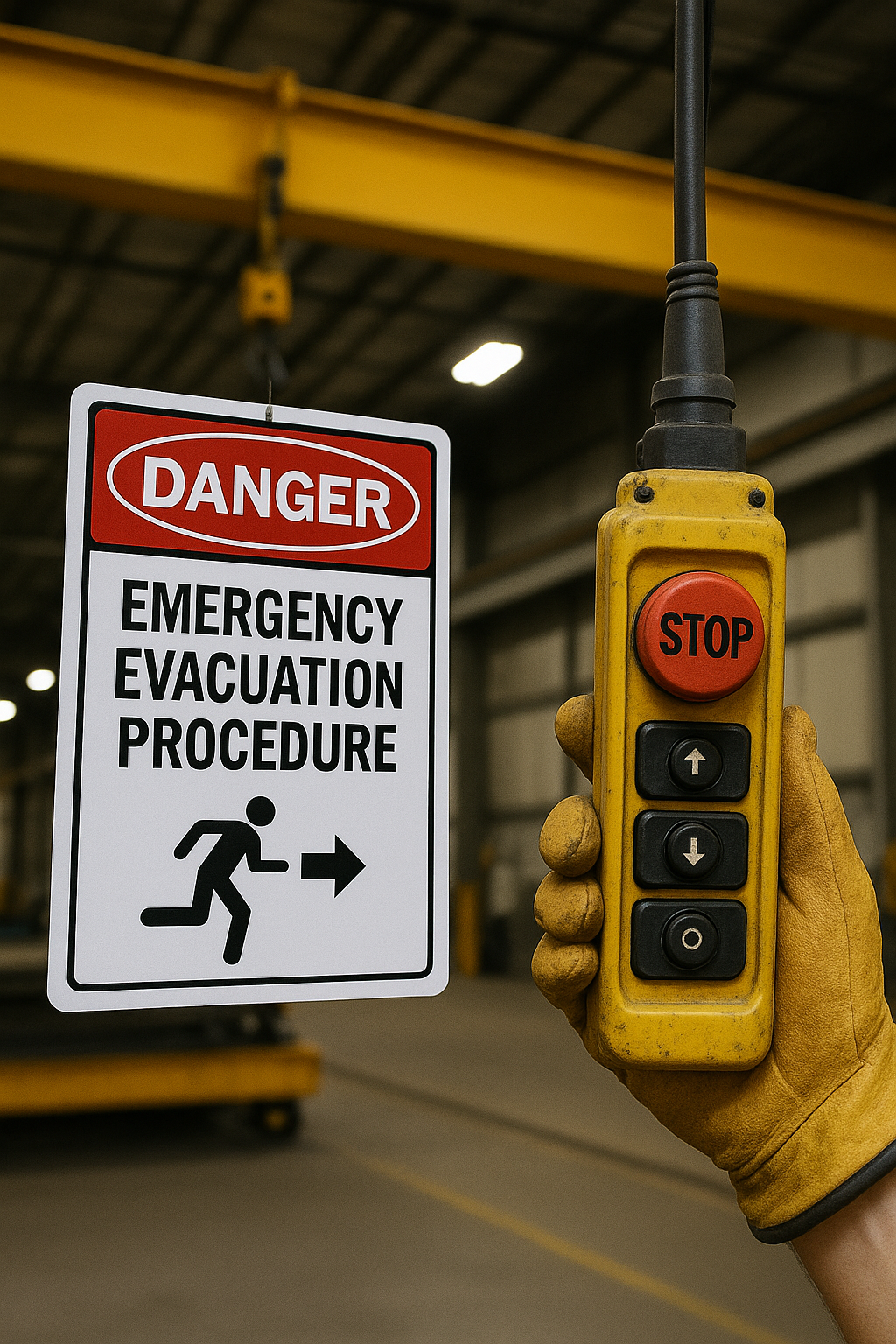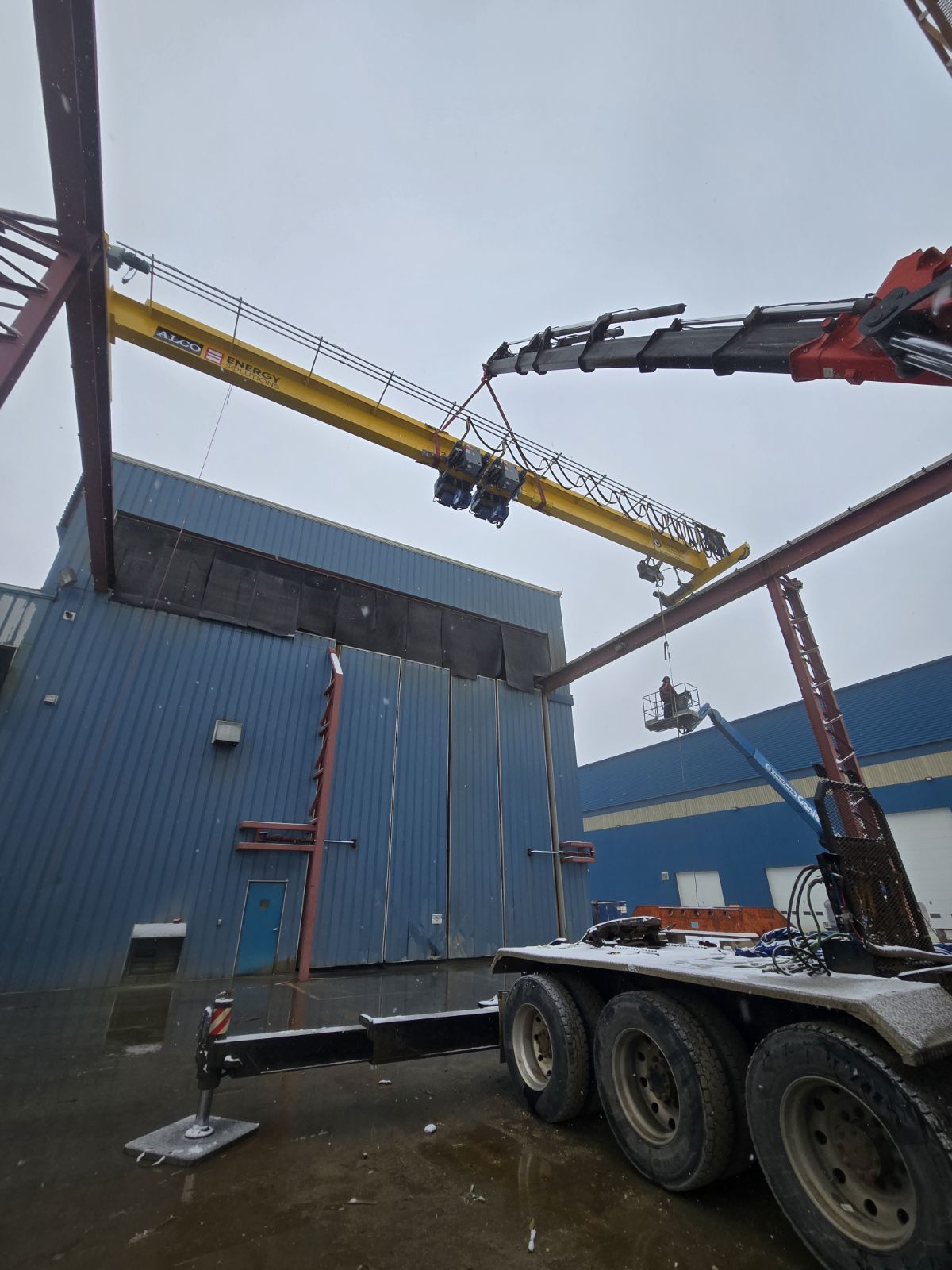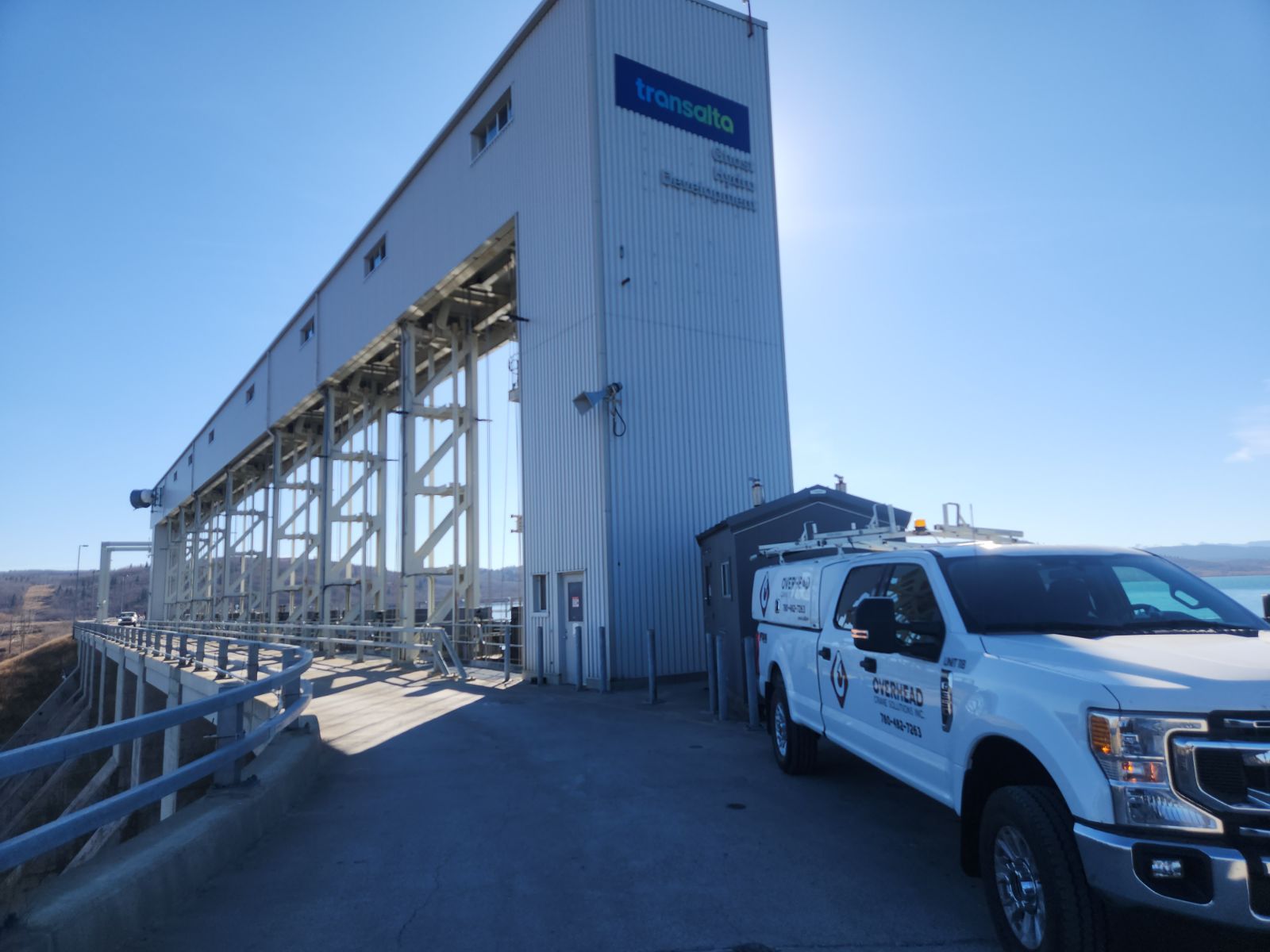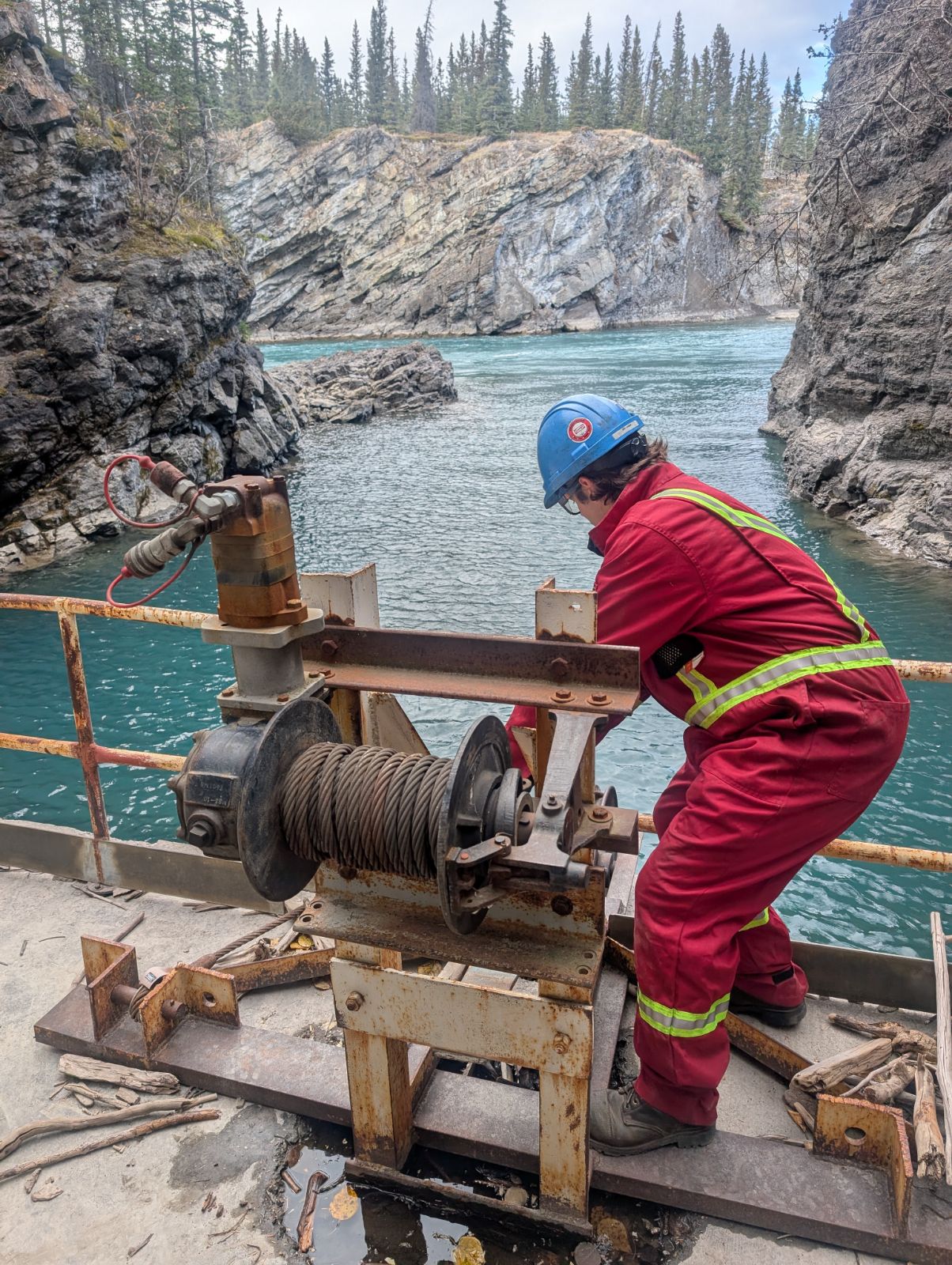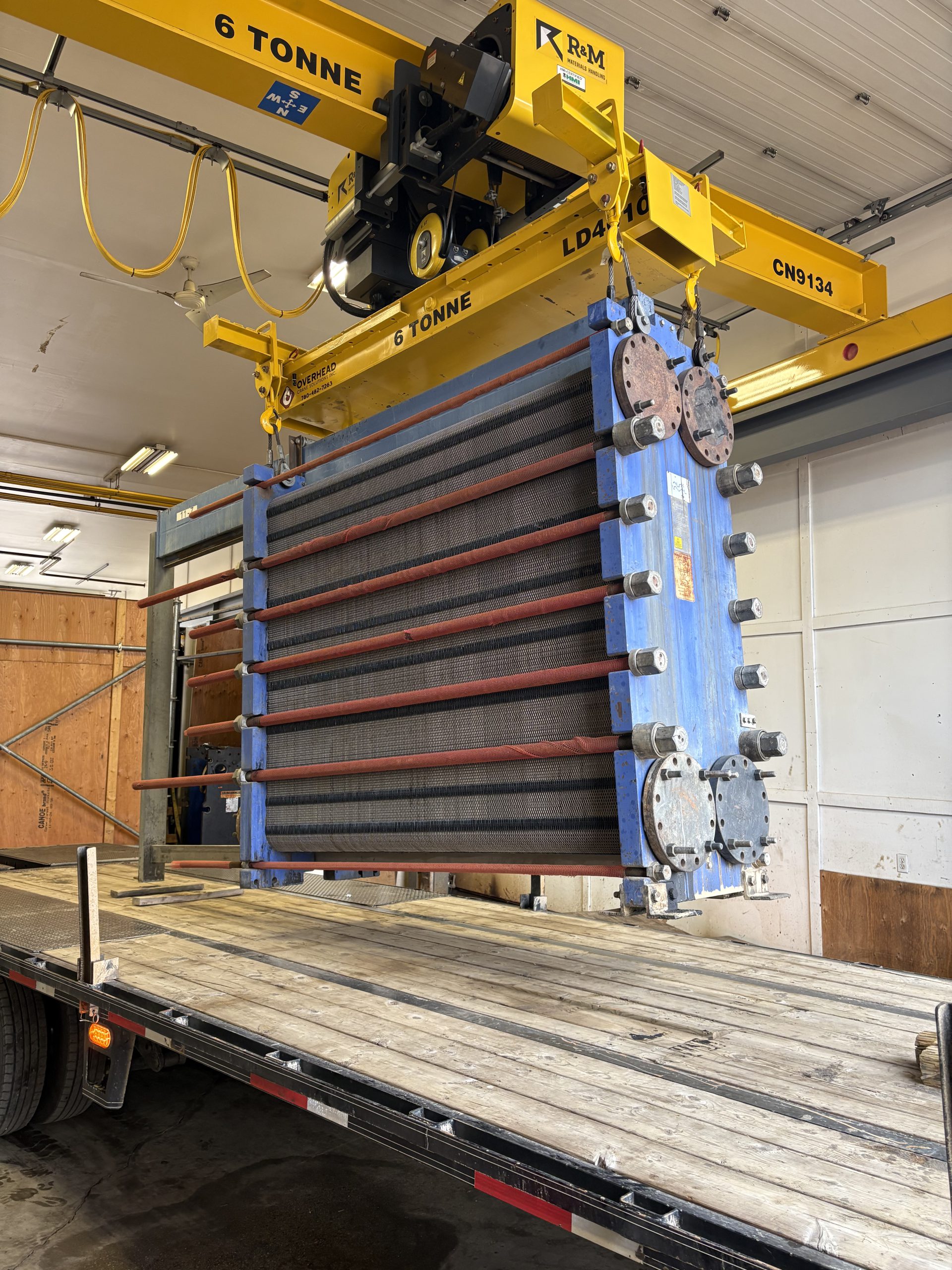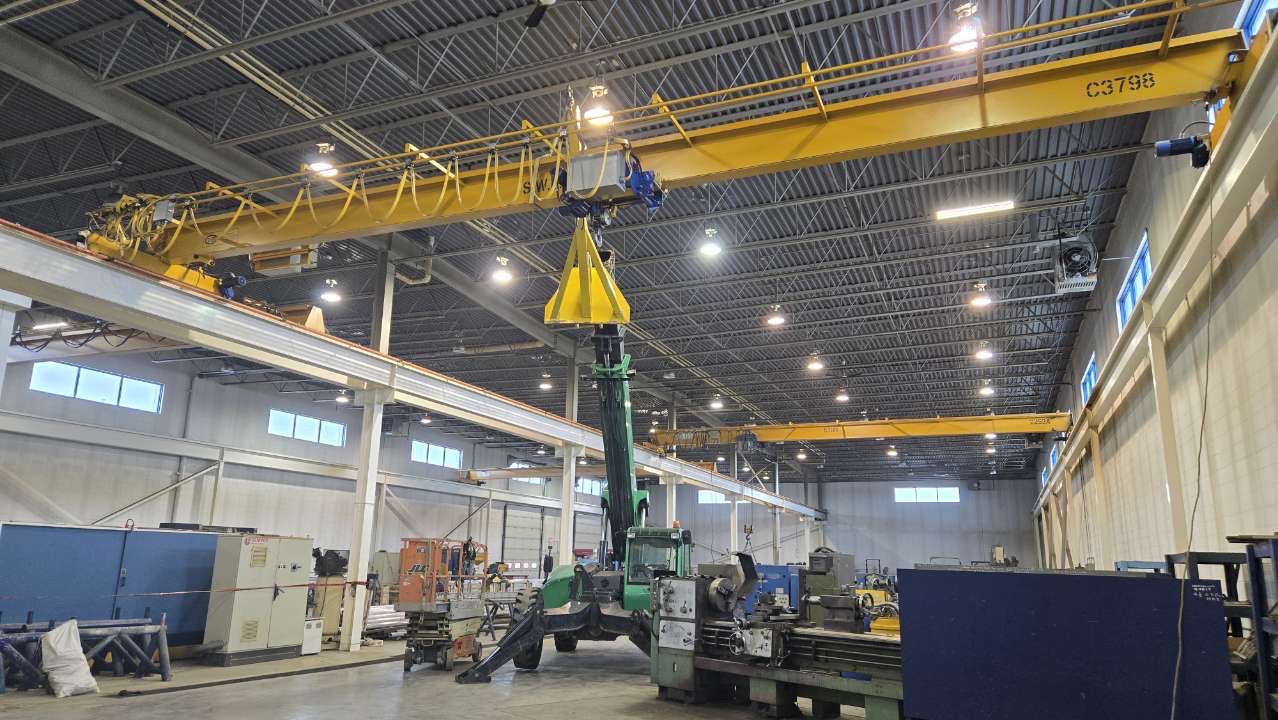When it comes to overhead crane operations, safety is always priority number one. While routine maintenance, inspections, and operator training are essential, it’s equally important to have strong emergency response protocols in place. Emergencies don’t come with a warning — and being unprepared can turn a minor issue into a serious incident.
In this blog post, we’re breaking down why emergency preparedness matters, what protocols should be in place, and how your team can stay ready for the unexpected.
Why Emergency Preparedness Is Essential
Overhead cranes operate in environments where a mechanical failure or human error can have serious consequences. A power failure mid-lift, a load becoming unstable, or even an operator health emergency can all pose risks to personnel, equipment, and productivity. Having clear, well-communicated safety protocols ensures that your team can respond quickly and appropriately — minimizing damage and preventing injury.
Common Emergency Scenarios to Plan For
-
Power Outage Mid-Operation
-
Plan for a manual lowering procedure or controlled release.
-
Ensure backup power or fail-safe systems are maintained and tested regularly.
-
-
Mechanical Failure (Brakes, Hoist, Trolley)
-
Operators must stop the crane immediately and secure the load.
-
Lockout/tagout procedures should be initiated to prevent further use until inspected.
-
-
Falling Load or Load Shift
-
Evacuate the area immediately.
-
Investigate the cause post-incident, and review lifting practices.
-
-
Operator Medical Emergency
-
Other workers should be trained to call for help and initiate emergency medical protocols.
-
Designate an emergency contact chain.
-
-
Fire or Explosion in the Facility
-
Shut down power to cranes and evacuate.
-
Have fire extinguisher locations clearly marked and accessible.
-
Must-Have Safety Protocols
-
Emergency Stop Functionality:
All cranes should have accessible and functional e-stop buttons. Test them regularly. -
Lockout/Tagout Procedures:
Technicians and operators must follow proper lockout procedures before maintenance or when a hazard is identified. -
Clear Communication Protocols:
Use radios or other systems to notify supervisors and coworkers in real-time during an emergency. -
Regular Emergency Drills:
Include overhead crane scenarios in your workplace’s emergency preparedness drills. -
Visible Emergency Signage & Documentation:
Make sure procedures are posted clearly in crane operation areas — including evacuation routes and emergency contacts.
Train for the Unexpected
Don’t wait for an emergency to find out your team isn’t ready. Emergency preparedness is an ongoing effort. Regular training sessions, toolbox talks, and drills help ensure everyone — from operators to supervisors — knows their role when something goes wrong.
Final Thoughts
Emergency situations with overhead cranes are rare — but when they do occur, your team’s response can make all the difference. A strong safety culture, built on training, protocols, and communication, is your best line of defense. At Overhead Crane Solutions, safety is built into everything we do — because when it comes to lifting, there’s no room for guesswork.

